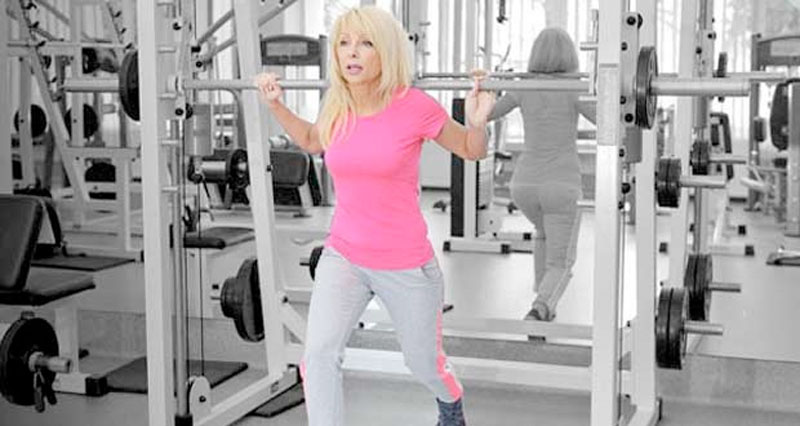Menopause is a significant phase in a woman’s life, typically occurring between the ages of 45 and 55. It brings a range of physical and emotional changes, including hormonal shifts, hot flashes, weight gain, mood swings, sleep disturbances, and an increased risk of conditions like osteoporosis and cardiovascular disease. However, engaging in regular sports and physical activity can help alleviate many of these symptoms, greatly enhancing both physical and mental well-being.
Regulating Hormonal Changes
As estrogen levels decline during menopause, women often experience symptoms such as hot flashes and mood swings. Aerobic activities like running, swimming, and cycling can help balance hormone levels and reduce the severity of these symptoms. Exercise boosts endorphin production, enhancing mood and relieving stress. Strength training is also crucial, counteracting muscle loss linked to declining estrogen and supporting a more stable hormonal environment.
Managing Weight and Metabolism
Weight gain is a common concern during menopause due to a slowing metabolism and changes in fat distribution. Regular physical activity helps manage weight by burning calories and enhancing metabolic rate. Cardiovascular exercises like walking, swimming, and cycling are effective for maintaining a healthy weight, while strength training builds lean muscle, keeping metabolism active.
Bone Health
Declining estrogen levels can lead to decreased bone density, increasing the risk of osteoporosis. Weight-bearing exercises such as walking, jogging, and resistance training are essential for maintaining bone strength. Regular participation in these activities can significantly lower osteoporosis risk.
Enhancing Mental Health
Menopause often brings mood swings, anxiety, and depression. Exercise is a powerful tool for improving mental health, as it releases endorphins that boost mood and help manage stress. Group sports and classes also foster social connections, reducing feelings of isolation. Mindfulness practices like yoga further enhance emotional well-being by promoting relaxation and mental clarity.
Improving Cardiovascular Health
Reduced estrogen levels during menopause increase the risk of cardiovascular diseases. Regular physical activity, particularly aerobic exercises, can improve heart health by lowering blood pressure, reducing cholesterol levels, and boosting circulation.
Enhancing Sleep Quality
Sleep disturbances, including insomnia and night sweats, are common during menopause. Regular exercise helps regulate the body’s circadian rhythm and reduces stress, leading to better sleep quality. Gentle activities like yoga and evening walks are especially effective for promoting relaxation before bedtime.
Boosting Confidence and Body Image
The physical changes of menopause can impact self-esteem and body image. Engaging in sports and exercise improves body tone, muscle strength, and physical resilience, helping women feel more confident and empowered during this transitional period.
Reducing the Severity of Hot Flashes
Studies indicate that physically active women tend to experience fewer or less intense hot flashes. Regular exercise can help regulate body temperature and improve circulation, reducing the frequency and severity of these sudden heat surges.
Creating Healthy Habits for the Future
Establishing an active lifestyle during menopause not only helps manage current symptoms but also supports long-term health. By staying active, women can reduce their risk of chronic diseases such as diabetes, heart disease, and cognitive decline as they age.
Types of Exercises Beneficial During Menopause
To maximize the benefits of exercise during menopause, it’s essential to adopt a well-rounded routine that includes various types of physical activity:
Cardiovascular Exercise (Aerobic Activity)
Cardiovascular workouts improve heart health, reduce body fat, and alleviate symptoms like hot flashes. Effective options include:
- Walking: A low-impact choice that boosts mood and promotes fat loss.
- Jogging or Running: Higher-impact activities that burn calories and strengthen bones.
- Cycling: Great for cardiovascular fitness with minimal joint impact.
- Swimming: A full-body, low-impact workout ideal for joint pain relief.
Strength Training
Vital for preserving muscle mass and maintaining bone density, strength training can be done through:
- Weight Lifting: Using free weights or machines to build muscle and strength.
- Resistance Band Exercises: Gentle, effective alternatives to weights.
- Bodyweight Exercises: Squats, lunges, and push-ups to enhance strength and core stability.
Flexibility and Balance Exercises
These improve mobility, reduce stiffness, and enhance posture, lowering the risk of falls:
- Yoga: Promotes flexibility, balance, and relaxation.
- Pilates: Focuses on core strength and flexibility.
- Tai Chi: A gentle exercise that enhances balance and reduces stress.
High-Impact Exercises for Bone Health
High-impact activities can build and maintain bone density:
- Jumping Rope: A high-intensity exercise that promotes bone strength.
- Dancing: Fun, rhythmic, and weight-bearing, enhancing fitness and coordination.
Low-Impact Exercises
Ideal for those new to exercise or protecting joints:
- Elliptical Trainer: Offers cardio benefits with less joint strain.
- Water Aerobics: Provides resistance without stressing joints.
Conclusion
Menopause is a transformative time that presents both challenges and opportunities. By staying active through sports and a balanced exercise routine, women can effectively manage symptoms like hot flashes, weight gain, bone loss, and emotional swings while enhancing mental health, cardiovascular fitness, and overall quality of life.
By prioritizing physical activity, women navigating menopause can empower themselves to thrive both physically and emotionally during and beyond this transitional phase.


